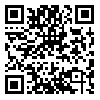BibTeX | RIS | EndNote | Medlars | ProCite | Reference Manager | RefWorks
Send citation to:
URL: http://jdisabilstud.org/article-1-2965-en.html
2- Assistant Professor, Department of Psychology and Education of Exceptional Children, Faculty of Literature, Humanities and Social Sciences, Science and Research Branch, Islamic Azad University, Tehran, Iran
3- Assistant Professor, Department of Educational Psychology, University of Tehran, Tehran, Iran
4- Professor of Computer and Electrical Engineering Department, University of Tehran, Tehran, Iran
Abstract
Background & Objectives: Students with reading disabilities have obvious and persistent difficulty learning to read, write, and spell, despite progress in other subjects. Social skills are a set of social and interpersonal skills that help people make deliberate decisions and have good communication, cognitive and emotional skills to live a healthy and productive life. One of the problems of children with reading disorders is seen in the area of their executive functions. These functions seem to play a key role in social growth and academic success. They include behavioral inhibition, maintaining attention, planning, reasoning, and working memory. Research indicates that the social skills of students with reading disorders are at risk. In this regard, the current study aimed to investigate the effectiveness of the manual executive function development package on social skills and reading performance of children with reading disorders.
Methods: The current research method The statistical population comprised primary school students of learning disorder centers in Saqqez City, Iran, in the 2021–2022 academic year. A list of reading disorder children was prepared by referring to learning disorder centers, and 30 students were randomly selected and put into two groups of 15 students each (experimental and control). The inclusion criteria were as follows: diagnosis of a learning disorder of the reading type by a clinical psychologist and referral from the school to the learning disorder center, the desire of the child and his or her parents to participate in this research, being 7–9 years old (in the first to the third grade of elementary school), lacking any other clinical diagnosis except reading disorder diagnosis, not taking psychiatric drugs for three months before entering the research, and not receiving or participating in simultaneous treatment courses during the research period. The exclusion criteria were not cooperating and doing the tasks presented in the sessions and the absence of more than two sessions in the treatment sessions. To conduct the research, the Social Skills Questionnaire (Teacher Form) (Gresham & Elliott, 1990) and Reading and Dyslexia Test (NEMA) (Kormi–Noori & Moradi, 2005) were used in all three stages of pretest, posttest, and follow–up. Then, the experimental group participants received the manual executive function package training intervention for 10 sessions of 90 minutes once a week. Data analysis was done at two levels of descriptive statistics and inferential statistics using SPSS version 23 software. Statistical indicators such as mean and standard deviation were used at the descriptive level. At the inferential level, analysis of variance with repeated measurements and the Bonferroni post hoc test were used. The significance level of statistical tests was set at 0.05.
Results: The results showed that the effect of group, time, and their interaction effect (time* group) on the variables of reading performance and social skills were significant (p<0.001). Manual executive function package training intervention caused a significant increase in social skills (p<0.001) and reading performance (p<0.001) of the experimental group. In the experimental group, the average difference between the follow–up and posttest stages in the reading performance variable was significant (p=0.041). However, the average difference between the follow–up and posttest stages in the social skills variable was not significant (p=0.123), indicating the lasting effect of the manual executive function package training intervention on the variables mentioned above.
Conclusion: According to the findings, the manual executive function training package effectively increases the social skills and reading performance of children with reading disorders and can be included in the curriculum of these children along with other educational programs.
| Rights and permissions | |
 |
This work is licensed under a Creative Commons Attribution-NonCommercial 4.0 International License. |




